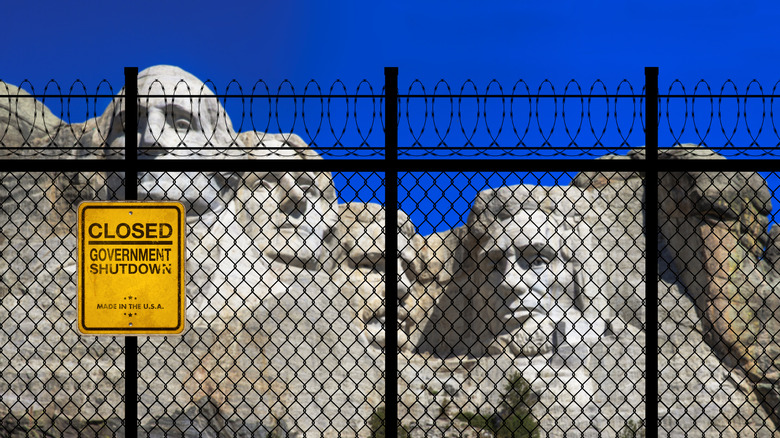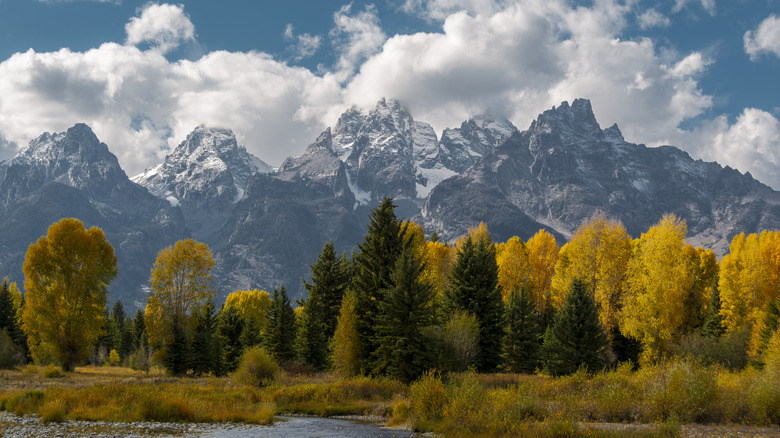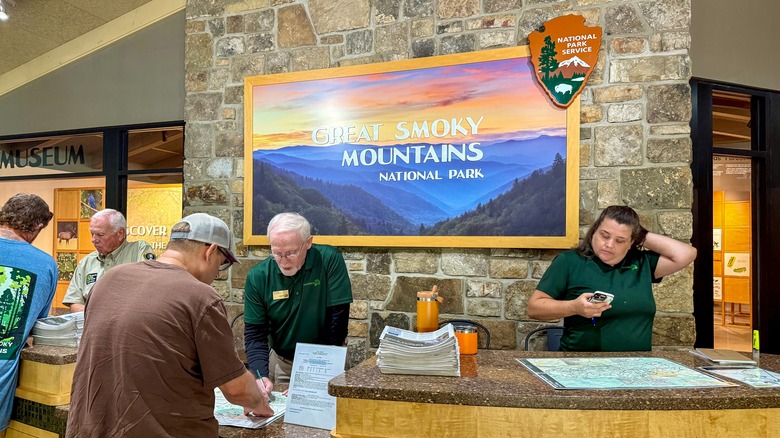What Happens To National Parks When The Federal Government Shuts Down?
The United States government officially shut down at midnight on October 1, 2025, after Congress failed to pass a spending package. This marks the first government shutdown in nearly seven years, and uncertainty looms over what lies ahead. One thing is clear: The shutdown will impact a wide range of federal services — including air travel, embassies, museums, and national parks. Travelers have been warned to expect travel delays, longer lines, and closures. Some of the country's most popular attractions, national parks, are already operating at reduced budgets due to earlier cuts, and now face full or partial closure as funding halts and many employees are furloughed. According to new guidance from the Department of the Interior published just hours before the shutdown, open-air national parks, roads, trails, and scenic lookouts will remain accessible, but staffed buildings — including visitor centers and landmarks like the Liberty Bell and the Washington Monument — will be closed. Law enforcement and safety officers are exempt, but more than 60% of the National Park Service workforce will be furloughed. Up to 433 sites could be affected, per the National Parks Conservation Association.
Warning banners have already appeared across park websites, advising: "National parks remain as accessible as possible during the federal government shutdown. However, some services may be limited or unavailable." However, clear, location-specific information has been hard to confirm. WyoFile reports that Yellowstone's campsites will remain open, but the visitors center will be closed and emergency services limited. Yet, as of this writing, Yellowstone's website simply links to the government's general contingency guidance, which lacks detail. The Grand Canyon, meanwhile, has been promoting the October 1st re-opening of its North Rim after a devastating lightning fire earlier this summer, and the park's website has no specific updates on whether campsites or even visitor centers are closed.
Why is the guidance confusing?
Frustrated travelers have turned to Reddit for updates. "Just got a notification that said Indian Cove campground in JTNP is closed," posted one, despite the fact that other parks have not issued anything. "It's insane that we are having to resort to Reddit to find info about our NPS and which are affected," wrote someone else. "Having said that, any info about Great Basin?" Another echoed: "There's definitely inconsistency. Some parks are posting information on their websites, some are sending out e-mails about cancelled tours/reservations, and nothing from others."
Last time the government ceased funding, there was confusion over how to implement the "lapse" guidance, leading to some parks' full closure and others' partial. Some states, like Utah, helped ensure their parks at Bryce Canyon and Zion National Park wouldn't close immediately, and New York spent its own money to avoid shutting down the Statue of Liberty and Ellis Island.
This time around, however, states are pleading with the government to close the parks for their protection and safety. Ahead of the shutdown, dozens of former park superintendents sent a letter to Secretary of the Interior Doug Burgum pleading for the federal government to shut the national parks down fully should the shutdown occur. The letter cited the previous 2018 government shutdown, in which partial shutdowns or understaffing led to vandalism, destroyed wildlife habitats, and physical endangerment of visitors. Arizona state governor Katie Hobbs' press secretary Liliana Soto lambasted the idea of Arizona carrying the federal burden, telling CNN that state taxpayers "cannot and should not continue bearing the cost of dysfunctional politicians in Washington, D.C., who would rather shut down the government than reach across the aisle and work together.'"
What needs to happen for the national parks to reopen?
The stakes are high for this government shutdown. National parks attract millions of tourists each year and play a large part in both state and federal economies. The 2018 shutdown lasted 35 days, and parks lost millions in revenue. According to the National Parks Conservation Association, every day this shutdown lasts will cost national parks at least $1 million, while the surrounding communities stand to lose $80 million in tourism dollars.
On another level, autumn is arguably the best time of year to visit parks like the Grand Canyon or Yellowstone, with mild weather, fall colors, fewer crowds, and increased chances to spot wildlife preparing for winter. For many, the shutdown is a major disappointment. If you have plans to visit U.S. national parks in the coming days or weeks, consider postponing or exploring alternatives, including the often-overlooked gems of the Canadian national park system.
In order to reopen the government — and by extension, fully reopen the national parks — Congress must pass a federal funding bill to be signed by President Trump. This will require compromise between Republicans and Democrats, whose disagreements over issues like immigration and healthcare contributed to the recent impasse. In the meantime, Congress could pass a "continuing resolution" — a short-term, temporary spending measure also called a "CR" – to restore services and buy some time for a longer-term bipartisan solution.


